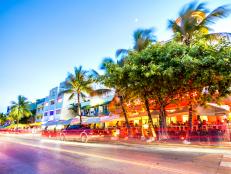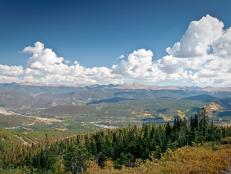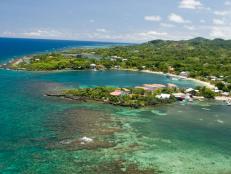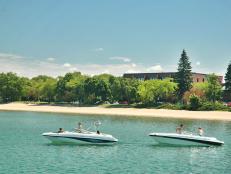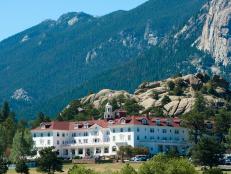A Tale of Two Islands: How to See Fiji for Less
Fiji’s reputation as a luxury travel destination is well-earned. But is it possible to travel there for less? And what is that experience like compared to a resort?

Joe Sills

Descending into the rain-soaked mountains, the plane’s twin propellers roared over the sea of thatched roofs and tin sheds below. Fully visible through an open portal into the cockpit, the plane’s instruments began to count down: 2,000, 1,000, 100 feet. Wheels down.
On a runt-sized runway in the middle of the South Pacific, my feet finally landed on the island of Vanua Levu. And as I stepped past the chainlink fence and under the shack that serves as Savusavu Airport, Fiji’s second-largest island came into perspective—this place is tiny.
Three thousand miles southwest of Hawaii, Fiji holds an almost mythical status in the minds of western travelers. The nation sounds exotic. Its mention conjures visions of gin-clear water, secluded beaches and a certain brand of high-dollar bottled water. For some, those visions give Fiji an unattainable status as a travel destination. Fiji is an island nation reserved for honeymooners and Silicon Valley executives—or is it?
My tattered travel backpack would beg to differ. From Vietnam to Versailles, we’ve trekked across the globe on a razor-thin budget with a week’s worth of clothes and cameras crammed into its innards. And, yes, we’ve just hit Fiji. Here’s how to travel to this exotic South Pacific island without breaking the bank.
Fly Economy

Joe Sills
The bad news? There’s no way around it, a flight to Fiji is going to cost you. Only one major airline services Fiji daily, Fiji Airways, which code shares with Qantas and American, and is run by the state. The good news? A ticket doesn’t have to cost as much as you might imagine. Round trip flights from LAX to Nadi can be had on Fiji Airways for about $900. That’s high when compared to the budget airlines that service Europe, but it’s about the cost of most flights from the U.S. to Southeast Asia or South America.
The good news? Fiji time is 19 hours ahead of U.S. Pacific Time, and the daily Fiji Airways flight from LAX is an overnight affair. Expect a solid seven to nine hours of sleep time over dark, Pacific skies and an early morning arrival in Nadi. Unlike Southeast Asia, you’ll barely notice the time difference in Fiji: You’ll just be living about a day ahead of your friends back home.
Bunk Up

Joe Sills
The Fiji you’ve seen on Instagram? That’s usually a resort experience. Make no mistake, resorts are a surreal way to experience the South Pacific. There’s nothing wrong with cozying up in a personal bungalow on the beach, relaxing on your own private island and scoring SCUBA lessons from a legendary dive master. If that’s your thing, head over to Jean-Michel Cousteau Resort (pictured above) and visit Danny and Don at the dive shop. They’ll take you into a real-life Animal Planet documentary, where you live The Life Aquatic and hear stories from Don’s 40-plus years of diving with the Cousteaus. (As in Jacques and Jean-Michel Cousteau, for real.)
If you’ve got kids, you’ll also want to look at resorts, which often host children’s clubs to give adults actual free time.
But, if you’re a single traveler or a group of such with backpacks, affordable accommodations are available—and they do come with views. In the capital city of Suva, rooms at the Colonial Lodge Bed & Breakfast can be had for under $30 USD per night. If your budget is slightly higher, Airbnb serves up a mountain retreat in Savusavu (Naveria Heights Lodge) for $125 USD per night, or a sailboat in Nadi for $145 USD.
Island Hop by Air and Sea

Joe Sills
With more than 300 islands in the country, you’ll likely want to explore beyond the main island of Viti Levu. The fastest way to find your way to other popular islands like Vanua Levu, Taveuni and Kadavu is to board a connecting flight from the international hub of Nadi. However, prices can be high—a round-trip to Savusavu on Fiji Airways costs $400 USD.
If you have time to spare, consider booking an overnight ferry voyage from Suva, a three-hour bus ride from Nadi. This is the way most Fijians travel between the two main islands, and though the ferry won’t get you to Tavenui or Kadavu, it won’t put much of a dent in your pocket either. You’ll be able to reach Vanua Levu for around $35 USD.
Know Your Currency

Joe Sills
U.S. dollar, Australian dollar, New Zealand dollar, Fiji dollar—when it comes to monetary name-sakes in Fiji, nobody seems to have gotten too creative in 48 years since the island nation gained independence from Great Britain. Currencies are relatively interchangeable on the main island of Viti Levu; however, on other islands, the local dollar reigns supreme. ATMs are widely available in most towns, but you won’t find any in the bush, so stash a few hundred Fiji bucks in your bag before leaving Nadi airport. (Save a pretty, purple $10 bill as a souvenir.)
The Fiji dollar’s exchange rate with your American bucks will hover around two to one, meaning your money can go roughly twice as far if you’re wise. Expect to pay $10-15 Fiji for most local cab fares, around $12 Fiji per meal and budget your beer money for $7 or $8 bottles. If you find yourself thirsty on a budget, sodas and local water (yes, the expensive stuff back home) is easy to find for around $3.50 Fiji.
Discover Local Secrets

Joe Sills
Fiji’s people are, in many ways, as beautiful as its landscapes. Most locals will greet you with a smile and an inquisitive, “Bula!” as you wander around their towns and villages. A few operate homegrown guide services and are eager to show you around their part of the islands.
For around $100 USD, you should be able to secure a guide for a day who can take you to local hideaways like jungle waterfalls, volcanic hot pools, villages and favorite restaurants. It is possible to rent your own vehicle and explore Fiji on your own; however, roads can be primitive, and most guides utilize four-wheel drive vehicles for this reason. Also, there’s the matter of villages, which usually have special relationships with the guides in order to access natural wonders that may be on their land.
The Roundup

Joe Sills
Traveling to Fiji isn’t cheap. While its reputation as an elite travel destination for the wealthy isn’t entirely earned, the nation’s remoteness and lack of air travel options still make it a destination that many will need to save for.
That said, it is possible to do Fiji for less, and the rewards are absolutely worth it. Unparalleled landscapes above and below the sea combined with friendly locals and a favorable exchange rate should place Fiji on any adventurer’s bucket list, whether you’re backpacking it or living the life of Cousteau.





